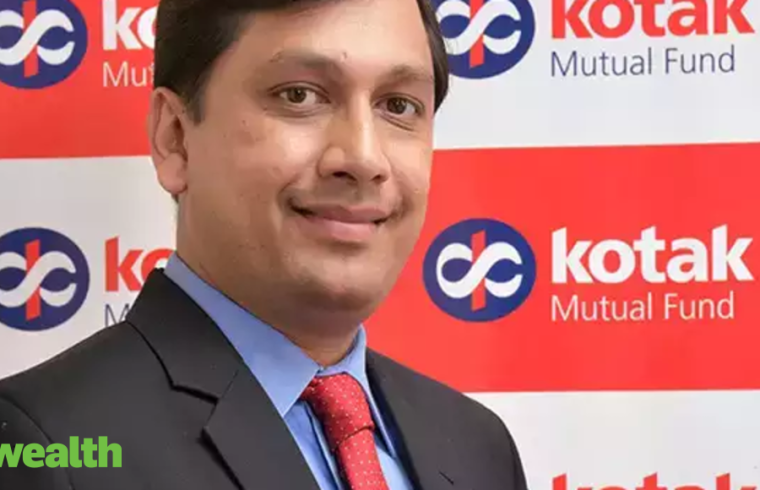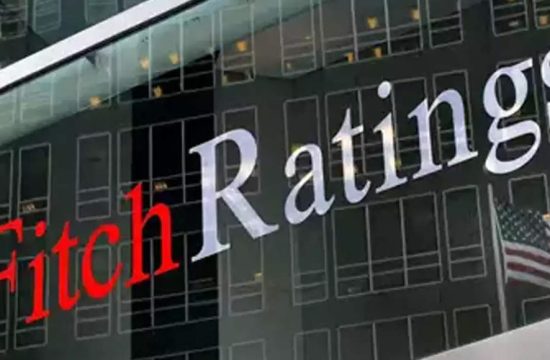
Market pundits are worried about the disruptions caused by the Covid pandemic in the mid cap spce, and poor earnings visibility in the segment. However, the mid cap schemes have been inching up in the last one month. Shivani Bazaz of ETMutualFunds.com reached out to Pankaj Tibrewal, EVP & Sr Fund Manager, Kotak Mahindra Asset Management Company, to find out what is happening in the mid cap space. Tibrewal, who manages Kotak Emerging Equity Fund, one of the consistent performers in the mid cap space, says FY22 should be a more normalised year for economic growth and when economy turns the corner and growth rate increases, mid and small companies would benefit the most. “The attractive valuation in the mid-small cap space makes a compelling case to include this category of funds in one’s portfolio at this stage,†he says. Edited interview.
According to equity analysts, earnings outlook for the mid cap segment is bleak. What is your view?
At an aggregate level, financial year (FY) 21 earnings will be impacted by the lockdown in first quarter; a broader earnings recovery may be visible only from the second half of FY 2021. However, we believe that beyond the near-term volatility, the markets will focus on the long-term sustainable earnings power of the companies and not on the 1-2 quarter disruption due to Covid.
Also, there are sectors like rural/agri consumption, agro chem, specialty chemicals, cement, IT and pharma where earnings will be quite resilient even in FY21. Further, in most of the sectors we are seeing the trend of companies with strong balance sheet gaining the market share and growing earnings even as the aggregate market growth is subdued. Our focus is on positioning the portfolio in such sectors and companies, to take advantage of the earnings recovery
Many investment pundits are asking investors to stay away from mid cap schemes due to the lack of clarity on whether mid-sized companies are likely to survive the economic disruptions caused by the pandemic, nationwide lockdown, ongoing crisis, etc. What is your reading of the situation?
Since January 2018, mid cap and small cap indices have seen sharp pull back and broader markets have been in pain for the last 30 months. The current downturn in the mid-small caps is already one of the longest and deepest, especially for small caps. Since January 2018 till 23 rd March 2020, 79% of the top 1500 companies by market cap have already corrected by more than 50% and 70% of them have corrected more than 60%. This kind of a price damage is already similar to the 2008-09 time period as we have been under weak economic conditions for last few years even pre-Covid.
Even during the financial crisis, the pain in mid-small caps was not so long. The current divergence between performance of large and mid-small caps is at historical extremes. Relative valuations of mid-small caps vis-a vis Nifty has corrected back to 2014 lows. History suggests that such divergences don’t exist for too long and post such large underperformance mid-small caps tend to outperform large caps over the next 18-24months.
We believe that in the near term, some mid-small companies may face trouble due to tight credit and demand conditions led by lockdown but we can’t generalise the same for the entire mid-small cap universe. There are many companies in mid-small cap segment across various sectors (tiles, plywood, agrochemicals, auto ancillaries, speciality chemicals consumer durables, IT etc) which are strongly positioned on balance sheet and cash flows and would benefit from this downturn in terms of increase in market share.
We are focussing on such companies which would be able to navigate the downturn and emerge stronger. Also, we believe that FY22 should be a more normalised year for economic growth and when economy turns the corner and growth rate increases, we believe mid-small companies would benefit the most. Our belief is that bottom up stock picking approach would be rewarded in mid-small space.
Most mid cap schemes have failed to offer decent returns even in the five-year horizon. Many schemes, including Kotak Emerging Equity, are offering negative returns in the three-year period. How would explain the track record?
It is a fact that in the last three years the broader markets have not done well. As explained above, this has been one of the longest and deepest drawdowns for mid-small caps segment and now due to Covid led correction in the equity markets, the last three 3years return of majority of midcap funds have turned negative.
Kotak Emerging has also delivered marginal negative return during the last three years but has delivered significant alpha over the benchmark. The fund is not an absolute return fund and the endeavour is to consistently outperform the benchmark over longer periods of time. In the last one year, there has been a wide variation in the SIP returns in the fund.
In January 2020, our one-year SIP return was 26% while in March 2020 the fund gave a SIP return of -41%, and in April a -21% SIP return. We can say that in the short-term, returns are largely driven by market sentiments and flows. While in the long-term, it is the fundamentals that will succeed and reward the disciplined investors. If you see five and 10-year returns, they have remained in the positive domain despite market turbulence.
If there is no financial exigency, one must continue with their SIP/STP right now to take advantage of lower market valuations and get the benefit of rupee cost averaging. To create wealth in the long-term, now is the time to take advantage of this situation.
What are the additional steps you have taken to insulate Kotak Emerging Equity Fund from imminent shocks in the economy in the next few months?
We haven’t made too many changes in the portfolio over the last few months. We have inf act added to our positions in many investee companies where price has become more attractive post correction and companies that would survive the downturn and the long-term value of the business is intact.
The template we use for selection of our investee companies which has helped us in this downturn are as follows: One, a good and sustainable business. Two, a great and honest management. Three, an attractive price. A good business is something that has a strong competitive advantage, is able to generate high returns on capital over sustainable periods of time, can generate strong and sustainable cash flow stream, is scalable, has longevity or a low risk of business disruption, etc.
In mid-small cap companies, promoters/management plays a very important role in scaling the business and hence we look for track record of management in terms of integrity, longevity and capability.
We have avoided companies with weaker balance sheet, high fixed costs, inferior cash flows, high financial leverage and corporate governance issues. We also have avoided companies where we believe that the company’s capital efficiency is poor and it won’t earn return on capital higher than the cost of capital for sustainable periods of time. Our stock picking philosophy as mentioned above, clearly demonstrates our bias towards quality and growth at reasonable price.
Your exposure to the small cap segment is higher than the category average. What is the rationale? Nobody is talking about the revival of the small cap segment anymore.
Yes, the observation is correct, but we never look from that perspective. Many of our investee companies in the small cap space are leaders in their sectors, trading at very attractive valuations with strong balance sheets and cash flows. We have always believed in the “Gorilla to King Kong†strategy. We at any point of time believe that one should have 50-60 solid gorillas (solid businesses) in the portfolios, some of them will turn into King Kong (large/mega caps). These gorillas could be from mid caps, small caps or even large caps subject to the market capitalisation limits defined in the offer document of the fund. Current allocation in the fund as defined by SEBI market capitalisation is approximately: Mid cap: 70%, Large cap: 11%, Small cap:16% and cash 3%.
`Play it safe and avoidi unnecessary risk’ is the advice given by most investment advisors in the current situation. Does this mean one should avoid mid cap schemes?
On the contrary, we are advocating a higher allocation towards mid-small cap funds through SIP/STP route over the next 6-12months. The current valuation gap of mid-small caps vis-a-vis large caps, we believe is providing an excellent opportunity for entry into mid-small cap funds. It makes sense to look at mid- small-cap dedicated funds with an investment perspective.
One should consider this space if someone is having a long-term investment horizon of, say, more than five years. One can start an SIP now. These categories of funds tend to generate better returns in the long-run. The attractive valuation in the mid-small cap space makes a compelling case to include this category of funds in one’s portfolio at this stage.
What are the additional steps a newcomer should take before investing in mid cap schemes? Should he have a longer minimum horizon of, say, at least seven years?
Any investor should have a time horizon of 7-10 years when investing in any of the categories of equity funds, whether large cap, mid cap or small cap. Even after such a correction in markets, the 10-year returns of the midcap fund category have been decent. Equity returns also tend to be lumpy. If you were evaluating the five year returns at the end of 2007, 2008 and 2009, you would get very different results. Consequently, the best way to invest in equities is to do a SIP and take advantage of equity volatility.
What is your advice to existing investors in mid cap schemes?
Over the last 15 years, we have seen various disruptions: financial crisis of 2008, slowdown of Indian economy in 2011-13, Greece debt crisis, demonetisation, trade wars, and now Covid. In spite of all these, Nifty Midcap has given a 10% CAGR return and many midcap mutual funds have done better than this. Investors have been rewarded for holding and investing in midcaps through periods of heightened volatility.
Valuations have corrected by 20-30% from the February-levels while the long run earnings power of a lot of companies has not been impacted to that extent. Consequently, we expect mid caps to deliver good returns over the next three to five years. This is the time to increase allocation to mid cap/small cap funds. If one already has a decent allocation, one should hold on to the investment.






